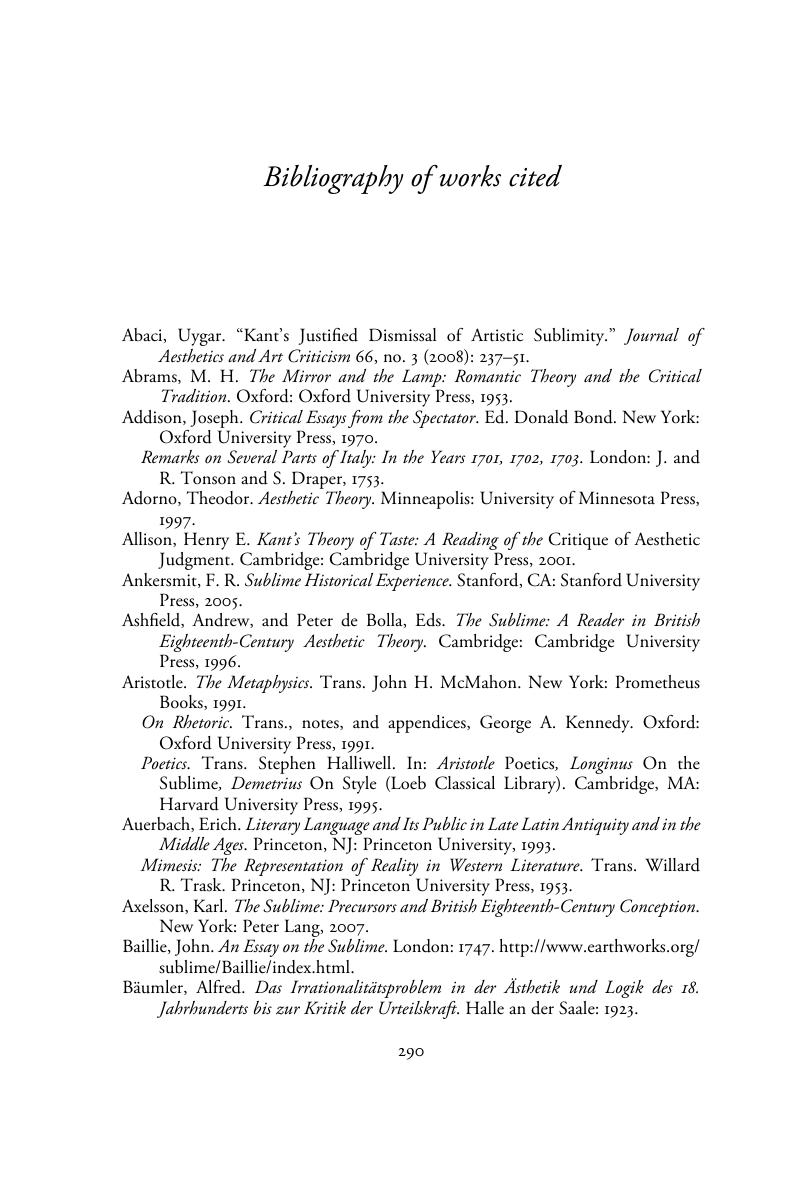Book contents
- The Theory of the Sublime from Longinus to Kant
- The Theory of the Sublime from Longinus to Kant
- Copyright page
- Dedication
- Contents
- Acknowledgments
- Key to abbreviations and translations
- Introduction
- Part I Longinus’s theory of sublimity
- Part II Sublimity and modernity
- Part III The sublimity of the mind: Kant
- Conclusion
- Bibliography of works cited
- Index
- References
Bibliography of works cited
Published online by Cambridge University Press: 05 July 2015
- The Theory of the Sublime from Longinus to Kant
- The Theory of the Sublime from Longinus to Kant
- Copyright page
- Dedication
- Contents
- Acknowledgments
- Key to abbreviations and translations
- Introduction
- Part I Longinus’s theory of sublimity
- Part II Sublimity and modernity
- Part III The sublimity of the mind: Kant
- Conclusion
- Bibliography of works cited
- Index
- References
Summary

- Type
- Chapter
- Information
- The Theory of the Sublime from Longinus to Kant , pp. 290 - 304Publisher: Cambridge University PressPrint publication year: 2015

